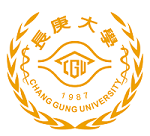Day 1 :
Keynote Forum
Albert M Wu
Chang Gung University, Taiwan
Keynote: Roles of polyvalency of glycotopes in the mechanism of protein-glycan interactions, one of the most potential directions for the transforming glycosciences
Time : 09:30-10:10

Biography:
Albert M Wu has obtained his PhD degree from the New York Medical College and had his Postdoctoral training at E.A. Kabat’s Lab for Quantitative Immunochemistry, Columbia University Medical Center, New York. He has worked as a Faculty at Texas A&M University in 1982; then as Full Professor at Chang-Gung University since 1989 and as Emeritus Professor after 2011. He has published over 120 glycoprotein and polyvalent glycotopes related papers. He is the Chief Editor for three volumes of Molecular Immunology of Complex Carbohydrates. His major interests are in Glycan purification and characterization; recognition factors of glycans and combining sites of lectins and antibodies. He has received many Outstanding Research Awards from government agents in Taiwan and U.S.A.
Abstract:
Lectins are Glycan Binding Proteins (GBP). On cell surfaces, they mediate cell-cell interactions by combining with complementary carbohydrates on opposing cells. They play a key role in the control of various normal and pathological processes in living organisms, such as fertilization, embryogenesis, cell migration, organ formation, immune defense and microbial infection. Improper function of cell recognition may cause disease. The hallmark of lectins is the ability to bind carbohydrates specially and reversibly. To provide a more valid and satisfactory depiction of the carbohydrate specificity, RFs (Recognition Factors) of lectins in order to elucidate their functional roles and to optimize their biomedical applications, the following RFs have to be defined (1) Sub-monosaccharide RFs (epimers and anomers of monosaccharides); (2) Monosaccharide specificity (Gal, GalNAc, GlcNAc, Man, LFuc and Sialic acid from mammalian glycans); (3) Expression of a lectin reactivity’s toward structural units by decreasing order; (4) the most active ligand; (5) simple multivalent or cluster forms of carbohydrate structural units; (6) complex polyvalent structural units and/or glycotopes as well as their resulting conformational features present in macromolecules. These RFs can be divided into two forms for different functions- the mono- forms are the weak RFs and provide mainly essential and basic structures for lectin identification and classification, while their polyvalent forms and resulting conformation features play a critical role in recognition intensities. The roles of polyvalency of glycotopes in the Mechanism of Protein-Glycan interactions should be one of the most advanced achievements in the field of Glycoimmunology since 1980.
- Enzymology & Biochemistry | Clinical Enzymology | Enzymology & Proteomics | Enzyme Kinetics | Glycans in Drug Design | Recent Advances in Glycobiology | Structural Bioinformatics and Proteomics | Glycans in Diseases and Therapeutics | Glycopathology: Glycans in Cancer | Cellular and Molecular Biology
Location: Meeting Hall
Session Introduction
Zhenjun Liu
Chinese University of Hong Kong, Hong Kong
Title: Enzyme assembly on crosslinked and cyclic protein scaffolds
Time : 10:10-10:40

Biography:
Liu Zhenjun has pursued her Bachelor’s degree in Polymer Material Science and Engineering from South China University of Technology. She has co-published two papers and three patents and received many scholarships including national scholarships. She is currently pursuing her PhD degree at the Department of Chemistry in the Chinese University of Hong Kong.
Abstract:
Enzymes are economically viable catalysts in the production of useful compounds in biotechnology. Scaffolded assembly of the enzymes can potentially increase the processability, stability and reaction efficiency. Here, an efficient assembly strategy is presented based on the robust protein scaffolds, using Spy chemistry and some small size of protein linkers DDs. Spy chemistry is a genetically protein gelation strategy, which plays a role as a skeleton of the protein scaffolds. The DDs perform as protein linkers to immobilize enzymes on the protein scaffolds. Enzyme assemblies has been created by fusing the enzymes with the corresponding protein linkers and the strong and specific interactions between protein linkers improve the specificity of assembly. The DDs also provide a good condition for enzymatic reactions without excessive interference. The formation of protein scaffolds was first confirmed by SDS-PAGE and then screened out the suitable condition. Moreover, the reactivity and selectivity of using DDs to assemble enzymes are characterized by Florescence Resonance Energy Transfer (FRET). Two types of scaffold form were designed: One is crosslinked protein scaffold and another one is cyclic proteins scaffold. Both of the scaffolds can assemble fluorescent proteins as well as enzymes in menaquinone pathway. Importantly, the in vitro reaction efficiency increases on the cyclic protein scaffold. While, enzyme assembly on the crosslinked scaffold self-assembled together. The kinetic parameters and morphology in enzyme assembly was further assembled to explain these phenomena. The work paves the way for the assembly-based regulation of multienzyme biosynthetic pathways.
Shiela Marie D Bahia
Balayan National High School, Philippines
Title: Transcriptome analysis of mature seeds of Moringa Oleifera and identification of genes related to lipid biosynthesis
Time : 10:40-11:10

Biography:
Shiela Marie D Bahia has completed her Masters in Science (Biology) from Ateneo de Manila University and Bachelor of Science in Biology degree from University of the Philippines Los Baños. She is currently working as a Research Coordinator of Balayan National High School where she also serves as Research Adviser to Grade 10 Special Science Class.
Abstract:
Despite the great potential of Moringa oil to address several health-related problems, there is a scarcity of information on transcriptome level studies to determine the genes that code for enzymes involved in the lipid biosynthesis. Functional annotation of the gene products encoded by the transcript assemblies (Trinity and Oases) from a previous study by Panes et al. 2017 were determined using databases such as NCBI NR, Swissprot, Uniref and Pfam. Moreover COG classifications, GO assignments and KEGG pathways assignments were also done. Gene expression analysis was done using the FPKM values of the transcripts. PCR and qPCR were utilized to validate selected lipid biosynthesis and reference housekeeping genes of M. oleifera. It was determined that Theobroma cacao is closely related to M. oleifera by having the highest percentage of protein hits for both assemblers. The identification of ACP, KAS III, FAD2, FATB, GPAT and those coding for oleosin and caleosin will serve as possible gene targets for future crop improvement of M. oleifera. Amplification of selected lipid biosynthesis genes, ACCase and oleosin and three housekeeping genes GAPDH, RPL1, and EF2 using PCR verified their presence in the transcriptome. Finally, single peaks generated from qPCR melt curve illustrations of GAPDH, RPL1 and EF2 confirmed their presence in M. oleifera seeds. Thus, the transcriptome profile of the mature seed embryo of M. oleifera generated from this study should shed light on its potential as a good source of oil significant for human consumption due to its nutritive properties.
Albert M Wu
Chang Gung University, Taiwan
Title: Expression of Sialyl Lex, Sialyl Lea, Lex and Ley glycotopes in secreted human ovarian cyst glycoproteins
Time : 11:30-12:00

Biography:
Albert M Wu has obtained his PhD degree with W Pigman, who is the Pioneer in glycoproteins, at New York Medical College and has completed his Postdoctoral training at E A Kabat’s Lab for quantitative immunochemistry, Columbia University Medical Center, New York. He has worked as a Faculty at Taxas A&M University in 1982; promoted as a Full Professor at Chang-Gung University since 1989 and as Emeritus Professor in 2011. He has published over 120 polyvalent glycotopes related papers. He is the Chief Editor for three volumes of Molecular Immunology of Complex Carbohydrates. His major interests are in Glycan purification and characterization, recognition factors of glycans and combining sites of lectins and antibodies. He received many Outstanding Research Awards (1997-2008) from government agents in Taiwan.
Abstract:
Human blood group A, B, H, Ii, Lea and Leb antigens and their determinants expressed on ovarian cyst glycoproteins have been studied for over five decades. However, little is known about sialyl Lex and sialyl Lea glycotopes, which play essential roles in normal immunity, inflammation and cancer cell metastasis. Furthermore, Lex and Ley were classified as glycotopes of unknown genes. Identification of these Lewis epitopes was hampered by the lack of specific antibodies. In this study, the occurrence of sialyl Lex, sialyl Lea, Lex and Ley reactivity’s in cyst glycoproteins was characterized by enzyme-linked immunosorbent assays. The results indicated that most human ovarian cyst glycoproteins carried Lex (8/25) and/or Ley (17/25) glycotopes. The expression (epitopes) of the new genes described in previous reports are Lex and Ley glycotopes; the reactivity’s of sialyl Lex and sialyl Lea glycotopes in secreted cyst glycoproteins may be affected by the conditions of purification; the relationship between Ley and human blood group ABH was confirmed; recognition profiles of sialyl Lex, sialyl Lea, Lex and Ley present in the carbohydrate chains of water-soluble cyst glycoproteins were illustrated; possible attachments of glycotopes to the internal carbohydrate complex of cyst glycoproteins have been reconstructed; proposed biosynthetic pathways for the formation of sialyl Lea, sialyl Lex, Lex, Ley, ALey and BLey determinant structures on Type I and Type II core structures of human ovarian cyst glycoproteins are also included in this study.
Tom Desmet
Ghent University, Belgium
Title: Exploring and engineering the application potential of sucrose transglycosidases
Time : 12:00-12:30

Biography:
Tom Desmet is an Associate Professor at the Centre for Synthetic Biology, Ghent University, Belgium where he heads the Bio-catalysis unit. He is particularly interested in the semi-rational engineering of carbohydrate-active enzymes and has established several new processes for the synthesis of rare sugars (e.g. L-monosaccharides), functional oligosaccharides (e.g. Kojibiose) and glycosylated compounds (e.g. polyphenols, flavonoids).
Abstract:
Because of the growing health awareness among consumers, the sugar industry has come under severe pressure all over Europe. However, alternative valorization of common table sugar can be realized through its biocatalytic conversion into products with more attractive properties. In that respect, it should be noted that sucrose is a very powerful glycosyl donor with an unusually high energy content that enables product yields up to 80% to be reached. Several types of sucrose trans glycosidases can be found in family GH13, also known as the amylase-family. By exploring the properties of different family members, three new specificities could even be discovered. On the one hand, sucrose-6’-phosphate phosphorylase 1 points towards the existence of a new pathway for sucrose catabolism, involving an alternative Pts. On the other hand, a glucosyl glycerol 2 and glycosyl glycerate 3 phosphorylase provide new insights into the metabolism of compatible solutes. Subsequently, the most promising enzymes were engineered for the production of value-added compounds. Through iterative saturation mutagenesis, a double mutant was obtained with high selectivity (>95%) for Kojibiose (alpha-1,2-glucobiose) as product. This rare sugar shows potential as low-caloric and prebiotic sweetener but its large-scale application has previously been hampered by an exuberant price. In turn, by rationally expanding the size of the active site, a whole range of novel anti-oxidant glycosides could be synthesized in gram amounts. These products display improved solubility and stability, which should be beneficial for use in food or cosmetic formulations. Currently, several new enzymes and processes are being developed in the framework of the H2020-project “Carbafin”.
- Lipid and Lipoprotein Metabolism | Industrial Applications of Enzymology | Molecular Enzymology | Glycobiology: It’s Role in Human Health | Synthesis and Biological Role of Glycans | Glycobiology and Glycochemistry | Glycobiology and Biotechnology | Structural Bioinformatics
Session Introduction
Zeba Haque
Dow University of Health Sciences, Pakistan
Title: Design and synthesis of ultra sensitive peptidyl FRET substrates for medically important enzymes
Time : 13:30-14:00

Biography:
I have completed my MBBS in December 1991. Soon after that I got married and with my elder daughter at 4 and newly born younger one, started my studies again. I have completed my M.Phil in 1999 and then PhD in Neurobiochemistry 2012. I am working as Professor of Biochemistry in Dow International Medical College. Along-with undergraduate teaching I am presently supervising 5 M.Phil and 03 PhD students. I am also Director of Institute of Biomedical Sciences (IBMS) and advanced research Labs Dow Research Institute of Biotechnology and Biomedical Sciences (DRIBBS). Having said all that I am a proud mother of two daughters, older one has recently graduated as Dental surgeon (BDS) and younger one is in second year MBBS in Dow Medical College Karachi.
Abstract:
Pakistan is a high risk country for many diseases specially HIV, dengue, malaria, breast cancer etc. The major problem is the awareness and education about these diseases to common people. Poor medical facilities, expensive lab test and early diagnostic tools/techniques are the major hurdles in setting the mind of the people towards the proverb that "Prevention is better than cure". The main idea of this project is to design and synthesis of cost effective and ultra-sensitive peptidyl substrates for medically and diagnostically important enzymes. Ultra sensitivity will be achieved by Fluorescence Resonance Energy Transfer (FRET) phenomenon. Available information on marker enzymes for malaria and tumor (only metalloproteases) and their possible substrates will be assessed. The susceptible scissile peptide bonds and their right and left neighbor amino acids will be observed to design short and ultra-sensitive substrates. Different combinations of fluorophore and quencher will be used to synthesize FRET substrates. The marker enzyme kinetic studies will be performed using newly designed and synthesized FRET substrates and their parameters will be compared to find ultra-sensitive substrate. Early diagnosis of disease using these substrates will not only prevent the people from dangerous diseases but also support the economy of the country.
Abdullah M Al Qahtani
King Saud University, Saudi Arabia
Title: Species diversity and vegetation of Fiqra Mountains in Madinah, Saudi Arabia
Time : 14:30-15:00

Biography:
Abdullah M Al Qahtani has completed his MSc and is currently pursuing his PhD in the College of Science, King Saud University, Riyadh.
Abstract:
Composition of plant species and vegetation types in Fiqra Mountains in Madinah, Saudi Arabia were studied. Plant and soil samples were collected from 100 different stands in the study sites. Collected plants were identified and their chorotypes and life forms were determined. Soil physical and chemical analyses were performed. Vegetation cover was analyzed using TWINSPAN and DECORANA software. A total of 126 species representing 39 families of vascular plants are recorded. Fabaceae, Poaceae and Boraginaceae are the largest families and therophytes and chamaephytes are the most frequent, indicating a typical desert life-form spectrum. The floristic composition of the different geomorphologic landscape units shows differences in species richness. The highest species richness value (23 species stand-1) is recorded in the Wadi bed. The lowest species richness value (18 species stand-1) is recorded in the Wadi plateau and fissures. Chorological analysis revealed that 52% of the studied species are bioregional, native to the Saharo-Arabian–Sudano-Zambezian region. After application of the TWINSPAN, DCA and CCA programs four vegetation groups were identified and they were named after the characteristic species as follows: (1) Aristolochia bracteolata-Cucumis prophetarum; (2) Calotropis procera-Acacia hamulosa-Caralluma russeliana; (3) Acacia abyssinica- Acacia hamulosa-Tephrosia desertorum; and (4) Argemone ochroleuca-Senna italica. The associations and speciation of these plants demonstrate significant variation in pH, electrical conductivity, soil mineral contents and human impact.
Pingtao Tang
Children’s National Health System, USA
Title: HIV Tat-induced activation of the ERK pathway and HIV gene expression precede the proliferation and dedifferentiation of renal cells in HIV-Tg26 mice
Time : 15:20-15:50

Biography:
Pingtao Tang has completed his MD and PhD from Huazhong University of Science and Technology, China. He has completed his Post-doctoral studies from University of Saskatchewan, Canada and NHLBI, National Institures of Health, USA. He is currently working as a Research Faculty of Children’s National Health System and Assistant Professor, GWU School of Medicine and Health Science, USA. He has published more than 40 papers in reputed journals and several chapters in professional books. He has been serving as an Editorial Board Member of repute journals such as Journal of Immunology and Vaccination, International Journal of HIV/AIDS Research, JBR Journal of Translational Biomarkers and Diagnosis in USA.
Abstract:
Introduction & Objective: The HIV-Tat protein is a powerful activator of HIV transcription, but can also be released by infected cells and induce the dysregulation and proliferation of cultured human podocytes not infected with HIV-1. However, it is unclear whether HIV-Tat can induce proliferation and de-differentiation of podocytes and activation of the ERK pathway thereby enhance renal injury of effect of HIV-1 gene in vivo. To determine whether HIV-Tat can induce the renal expression of HIV-1 gene and the proliferation and de-differentiation of glomerular epithelial cells and activation of ERK pathway thereby effect of renal injury in HIV-Transgenic (HIV-Tg26) mice.
Method: rAd-Tat and LacZ control vectors (2×109) were expressed in renal glomeruli of WT and HIV-Tg 26 young mice without pre-existing renal disease. Mice were sacrificed at 7 days and 35 days. The renal expression of HIV-genes, nephrin, synaptopodin, WT-1, cyclin D-1, FGF-2, VEGF and signaling pathways that modulate the growth of glomerular epithelial cells was assessed by RT-PCR, Immunohiostochemistry and Western blots.
Result & Conclusion: At seven days, rAd-Tat induced the renal expression of HIV envelope gene in HIV-Tg26. This change was associated with activation of the ERK pathway and up-regulation of FGF-2 and VEGF that preceded the proliferation and de-differentiation (down regulation of nephrin, synaptopodin and WT-1) of renal glomerular epithelial cells. rAd-Tat reduced activate caspase-3 and apoptosis of renal cells at seven days. It also preceded the down regulation of cyclin D1, WT-1, nephrin, synaptopodin and the proliferation of renal glomerular epithelial cells at 35 days. rAd-Tat induces the expression of HIV-1 gene (env) in the kidney of HIV-Tg26 mice. This change was associated with activation of the ERK pathway and up regulation of FGF-2 and VEGF that preceded the development of proliferative changes in renal epithelial cells and de-differentiation of podocytes in HIV-Tg26 mice.
Laila A Alhadad
Kuwait University, Kuwait
Title: Targeting ovarian cancer using cholesterol conjugated HSP27 inhibitor encapsulated into nano low density lipoprotein particles
Time : 15:50-16:20
Biography:
Laila A Alhadad is working at Kuwait University.
Abstract:
Cholesterol conjugated to anti-cancer moiety has an effective drug delivery for cancer therapy. Many studies developed new promising cholesterol dug conjugates for either disease diagnosis or cancer treatment. In our research laboratory, we synthesized cholesterol chemically conjugated to a potent anti-cancer moiety that targets HSP27 and reduces HER2 stability through HER2 pathway because of their cellular importance. Both proteins are proportionally up and down regulated in cancerous cells and cause chemotherapy drug resistance. Therefore, synthesis of cholesterol conjugated to anti-cancer agent target both proteins is an attractive approach. Normally, cholesterol esters transport to and from the cells via lipoproteins synthesized in the liver. Based on that, first we designed, synthesized and characterized cholesterol conjugated HSP27 inhibitor. Second, measured the particle size of the drug encapsulated into LDL using DLS technique. Third, tested SKOV3 cell line viability with the nano-LDL particles containing cholesterol conjugate using MTT assay. In sum, the agent which loaded into nano-LDL particles, showed potency inhibiting SKOV3 cell's growth. In sum, development of new medicinal compounds for cancer treatment became one of the principle attractive approaches in pharmaceutical chemistry.








